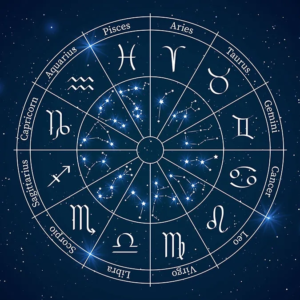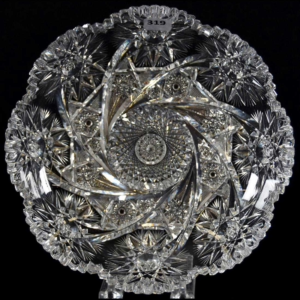Rhyolite stone – properties, virtues and benefits
Rhyolite stone is a unique-looking volcanic rock, often used in jewelry and interior design. With its vivid colors and fine grain pattern, rhyolite is a fascinating stone that can add a natural touch to any design project. Find out more about the characteristics and uses of rhyolite stone in this article.
CHARACTERISTICS OF RHYOLITE
- Chakra: Heart.
- Properties: Emotional stability, mental clarity, creativity, connection to nature.
- Astrology: Mercury.
- Zodiac: Sagittarius, Gemini.
- Elements: Earth, Fire.
- Colors: Varied, often beige, Pink, brown, red, green.
- Hardness: 6-7 on the Mohs scale.
- Chemical Formula: Complex composition of silica, feldspar and other minerals.
- Associated god: None.
RHYOLITE STONE – ITS HISTORY
Rhyolite stone has long been mined as a mineral element, but little is known about its history and traditional uses. It belongs to the group of granites, which are magmatic plutonic rocks with a grainy texture, rich in quartz, potassium feldspars (orthoses) and plagioclases and micas (biotite or muscovite). Granites are widely used in construction, particularly for paving, decorations, worktops and sculptures, as they are highly resistant and come in over 500 different colors, making them interesting for a variety of uses.
Granites are among the intrusive rocks, which form deep in the Earth’s crust when large magmatic masses mixed with other minerals slowly crystallize in a certain order, producing massive plutons that eventually appear on the surface after the underlying soils have eroded away. Other types of granite are formed by the melting of the Earth’s crust during collisions between tectonic plates. They are mainly composed of minerals such as quartz, micas, potassium feldspars and plagioclases, but may also contain other minerals such as hornblende, magnetite, garnet, zircon and apatite.
.
Granites can be formed by two main petrogenetic processes: crustal melting, where minerals from the earth’s or ocean’s crust are melted to produce a granitic fluid, and mantle melting, where ultramafic minerals are melted to give basalts, andesites or diorites. However, these models are not sufficient to explain the wide variety of existing granites, which are often formed by contamination or enrichment of basic magma by silica (Na) and alkalis (K), the main elements in the earth’s crust. Granites can also be formed by the mixing of basic magmas of mantle origin and granites of crustal origin.
The majority of granites therefore have two potential origins, mantle and crustal, and there are many possible intermediates between these two sources. Granites, which are found in the lower part of all continents, are mainly formed during lithospheric plate collisions. During these collisions, friction between the plates causes strong heating under the continental crust. Melting of the lower crust, either by thermal processes or mechanical shearing, leads to the formation of granites, which eventually appear on the surface after erosion of the underlying soils.
.
Granites, in all their forms, are therefore a central component of the earth’s crust and make up to 75% of the exposed soil surface in some parts of the world such as South Africa, north-east Brazil and north-west Australia.
RHYOLITE STONE – ITS ORIGIN AND COMPOSITION
Rhyolite stone is a magmatic rock equivalent to granite, but is light, Pinkish or gray in color in the majority of cases, although it can also be found as a black gem called obsidian, which is rich in quartz and has chemical properties similar to glass. Because of its high resistance to frictional wear, it was a material of choice for the construction of grindstones and for sharpening metal tools in Roman times. Today, it is widely used in aggregate form for TGV railroad ballast.
.
Rhyolite stone is over 71% silica, with low iron and magnesium content, as well as variable alkali content (a higher amount of alkali feldspar would make it a trachyte-type rock). Its microlitic structure enables the minerals of which it is composed to be observed with the naked eye, notably quartz (which often contains glassy inclusions), feldspar and biotite. It belongs to the group of extrusive igneous rocks and forms when the silica-rich SiO2 magmatic mass cools raPidly, as is the case with granite, when it reaches the surface or near-surface.
The large magma masses that give rise to rhyolite stone can originate either from partial melting of the continental crust, or more often from the differentiation of basaltic magma from the partial melting of peridotite, which is a major constituent of the earth’s mantle. The name rhyolite stone derives from its fluid structure, which is marked by the presence of microlites (small crystals) that begin to develop before the volcanic material solidifies. Some varieties, such as obsidian, pechstein, perlite or pyromeride, are entirely glassy due to the faster cooling of the magmatic mass, which prevents any form of crystallization.
.
The colors and shapes of rhyolite lava flows can vary considerably, from green to brown through the whole range of yellow, orange, ochre and caramel colors. They can also create banding or bubble effects, or lead to the formation of layers of crystals, resulting in surprising mixtures of colors, as in the case of rainforest jasper. In the case of very slow cooling, mineral matter can become dense and black with a few golden inclusions, as in the case of obsidian, depending on the amount of gas trapped during its solidification.
.
Rhyolitic lava eruptions are relatively rare these days, and have only recently been observed in a few volcanic regions such as Iceland. However, there are numerous rhyolite stone deposits in regions such as the Harz, Saxony, Vosges and Esterel.

RHYOLITE STONE – VERTIES AND PROPERTIES
HRYOLITE ON THE PSYCHOLOGICAL LEVEL
Rhyolite stone is associated with success, abundance, prosperity and hope, and can help people approach life with more serenity. It accompanies those who have projects or goals to achieve, particularly financial ones, providing the motivation needed to move forward in their work and achieve success. It also encourages creativity and insPiration, which can be very useful in the creation of projects. It is therefore an invaluable ally in helPing dreams to come true and in promoting visualization and the manifestation of desires. Rhyolite stone enables emotional renewal and brings calm and positivity while dispelling doubts, enabling you to move forward with greater serenity towards your dreams.
When this stone is placed on the solar plexus chakra, seat of sacred power, it emits warm vibrations of pure love and joy. It helps work on low self-esteem and self-respect. It dispels negative thoughts, reinforces concentration on individual strengths and boosts self-confidence. It also allows you to let go of your fears and insecurities and focus more on your strengths and talents. Rhyolite stone is fortifying and helps to abandon negative attitudes and unhealthy addictions over the long term.
Rhyolite stone, considered the volcanic equivalent of granite, is associated with success, prosperity and hope. It helps to approach life with greater serenity and to realize life projects or financial goals by providing the motivation needed to move forward in one’s work. Rhyolite also helps give free rein to creativity and insPiration, encourages visualization and the manifestation of desire, and dispels doubts and feelings of incapacity. When placed on the solar plexus chakra, it helps to work on low self-esteem and self-respect, warding off negative thoughts and increasing self-confidence. Rhyolite also facilitates communication and strengthens bonds of friendship, partnership and family, while alleviating weaknesses. It must be cleaned regularly and recharged to ensure its effectiveness over time. It can be programmed by placing it on the third eye and visualizing its objective, but this is not a mandatory step and does not alter its virtues.
PHYSICAL RHYOLITE
The rhyolite stone was used by our ancestors because of its high quartz content, considered a powerful tool for relieving various ailments. This stone is beneficial for the body in general, as it stimulates and strengthens the immune system, promotes vitamin absorption and supports efforts to combat overweight.
Rhyolite is also known for its detoxifying and cleansing properties, which improve kidney and liver function. It is thus recommended to help kidney stone sufferers rebalance their bodies more quickly. In addition, thanks to its healing properties, it can be used to treat certain viral skin rashes. Rhyolite is also beneficial for blood vessels, and can help combat permanent dilation of veins and other circulatory problems. It is also said to have a beneficial effect on skin aging. Rhyolite can therefore be used as part of alternative theraPies to help relieve a wide range of conditions.

RHYOLITE STONE – CLEAN AND RECHARGE
Rhyolite stone can be cleaned and recharged in a variety of ways to maintain its properties and energetic vitality. Here are some common methods:
Cleaning:
- Clear water: rinse under running water for a few minutes while visualizing the negative energy escaPing from the stone.
- Fumigation: expose the stone to sage, palo santo or sandalwood smoke, allowing the smoke to invade the stone.
- Earth: Wrap the stone in earth for several hours to allow the earth to absorb negative energies.
Loading:
- Solar light: Place the rhyolite stone in direct sunlight for a few hours to recharge it with solar energy.
- Moonlight: Expose the stone to the light of the full moon for several hours to recharge its energy.
- Crystals: place the rhyolite stone on a cluster of crystals such as amethyst, quartz or citrine to recharge it with energy.
It’s important to note that rhyolite is a stone that can crack or break under the effect of heat, light or sudden temperature changes. It is therefore important to take care of the stone and handle it with care when purifying and recharging.
WHERE DOES THE NAME RHYOLITE COME FROM?
The name “rhyolite” comes from the ancient Greek “rhyax”, meaning “flow” or “current”, referring to the viscous appearance of rhyolitic lava. Rhyolite is a volcanic rock formed by a silica-rich explosive eruption, which cools raPidly to form a dense, fine-grained rock. The rock is often light to dark gray in color, with intriguing patterns and mottling. Rhyolite is commonly used as an ornamental stone in construction and decoration, as well as for jewelry and objets d’art.
WHICH CHAKRA DOES RHYOLITE ACT ON?
Rhyolite stone is associated with the heart chakra, located in the center of the chest. The heart chakra is considered the center of love, compassion, emotional healing and balance. Working with rhyolite stone can help open and balance this chakra, promoting love of self and others, emotional healing, creativity and connection to nature. Rhyolite is also considered a supportive stone for people seeking to heal emotional wounds and regain their inner balance.
WHICH ASTROLOGICAL SIGN IS ASSOCIATED WITH RHYOLITIS?
Rhyolite is associated with the astrological signs Sagittarius and Gemini. Sagittarians are known for their optimistic nature and thirst for freedom, while Geminis are known for their curiosity, intelligence and ability to communicate effectively. By working with rhyolite stone, these signs can find support in develoPing their creativity, intuition and connection to nature, as well as healing emotional wounds and regaining their inner balance.
RHYOLITE STONE SUMMARY
Rhyolite stone is a light to dark-gray extrusive volcanic rock, formed from raPidly cooled lava or volcanic ash. It is often used as a building material and in the manufacture of jewelry and other decorative objects. Rhyolite is characterized by its granular and sometimes Pitted texture, as well as by its veins and inclusions. It may contain various minerals such as quartz, feldspar, mica and amphibole. Rhyolite deposits are found in many parts of the world, including North America, Europe, Asia and Africa.

